The Moll Twins

Nov 2022 Issue 11 TAKEOFF TAKEOFF
The mission of TAKEOFF Magazine is to inspire amateur athletes to personal greatness.
My name is Adele San Miguel, and I am the co-founder of Pole Vault Carolina, a training facility based in Durham, North Carolina.
TAKEOFF is the next iteration of our club’s mission: to coach the athlete to their highest self. I’m thrilled to have you on our runway.
ADELE SAN MIGUEL, PUBLISHER + EDITOR

TAKEOFF MAGAZINE
EDITOR
TAKEOFF November 2022
HELLO THERE!
This issue was nearly ready to publish last month when tragedy struck - my younger brother passed away. George was a chef, restaurateur, and amateur hockey player who possessed the family quick wit. Though the loss is huge for me personally, laughing is how I will remember him. This issue is dedicated to George.
In the inaugural issue of TAKEOFF, we featured Hana and Amanda Moll in a story titled The Twin Takeover. It was a harbinger for what was to come.
Jumping forward to 2022, A Tale of Two Sisters is a personal interview with Hana and Amanda just after they returned from the World U20 Championships in Cali, Colombia. Turn to page 16 for their delightful interview.
Pole vault coaches matter and you can read why in our ClubHub section where Emily Pearson and Libby Lommel appreciate their coach, Jon Hammerschmidt, page 8.
On a fall Sunday in 2021, Duke head track and field coach, Shawn Wilbourn, stopped by our club and witnessed the athleticism of Jonathan Horn and Maddie Davies. Read the story of their recruitment on page 12.
Two-time Olympic athlete and three-time Olympic coach, Phillipe D’Encausse says that the most important thing is two things. Read If I Knew Then on page 26 to discover what those two things are!
Russ Johnson is the 2015 USATF National Collegiate Coach of the Year and he analyzed Mason Coon’s jump in Coach’s Critique on page 22. Mason is a collegiate athlete at Peace University in Raleigh, NC.
Summer McNeill is back on the Nutrition page, instructing us on the use of supplements. Summer is currently working with the Auburn athletic department as part of her master’s program.
Leah Granger brings her insight into mental health and the pole vault in How to Trick Your Mind into Being a Better Vaulter on page 14.
Thank you for joining us for issue #11!
All the Very Best, Adele
A
LETTER FROM THE
HTAKEOFF MAGAZINE 3
ON DECK
Issue Number 11
Letter from The Editor 3
Makes and Misses 6
ClubHub: Twin Valley Pole Vault 8
NUTRITION: Supplements: What You Need to Know 10
RECRUITED: Jonathan Horn and Maddie Davies - Duke University 12 MENTAL HEALTH: Trick Your Mind into Being a Better Vaulter 14
The Moll Twins: A Tale of Two (World Class) Vaulters 16 Coach’s Critique with Russ Johnson 22
If I Knew Then with Olympic Coach Phillipe D’Encausse 26
Cover photo of Hana (left) and Amanda (right) provided by Tim Reilly.
4 TAKEOFF MAGAZINE
Trick Your Mind Into Being a Better Vaulter

USATF National Collegiate Coach of the Year; Bronze medalist at U.S. National Championships and the Pan Am Games


Coach’s Critique

CONTRIBUTORS
Russ Johnson
Leah Granger
Neuroscience Student Pole Vaulter, Middlebury College
Head Coach of Pole Vault Carolina
Makes and Misses B.S. Nutrition and Dietetics Post Collegiate Pole Vaulter Nutrition: Supplements, What You Need to Know Summer
McNeill
5
Jose R. San Miguel
MAKES & MISSES
By Jose R. San Miguel
Wanting more is a natural human trait.
This is the story of Jessica Anderson, Dreamer. And, it is the story of anyone with an aspiration and the tenacity to work for it.
In February of 2020, then college sophomore Jess Anderson walked into Pole Vault Carolina to attend a beginner’s clinic. Already a collegiate high jumper, Jess yearned to learn the pole vault. She had never vaulted but figured her gymnastics and athletics background would be beneficial. Her first day was a success. Jess quickly moved into the open sessions, which she attended after completing her high jump practice at Elon University, a two hour round trip. A few weeks later, Jess sprained her ankle doing a sprinting drill into the mat. She addressed the injury with the school trainers and coaches without mentioning that it happened at pole vault practice. She did not want to be discouraged from her goal.
After healing, Jess attended another beginner’s session. To her surprise the daughter of the assistant coach at Elon was in attendance. A secret no longer, Jess addressed her desire to become a collegiate pole vaulter with her head coach. Coach Elliston was more supportive than some would have been.
He gave Jess permission to pole
vault at our facility on her own, but he did not have a spot for her on the vault squad. That was all Jess needed to hear. With her huge why, Jess interpreted the coach’s reaction as hope
She quickly progressed. Jess attended club meets competing unattached and became a part of the support system at the club, which benefitted her and the other athletes. During the pandemic, we broadcasted our meets live on Instagram. Jess’ family and college teammates joined to watch, and in one meet she thrilled them with a 10’ clearance, which was an 18” improvement!
With a video to prove her performance, Jess tried to persuade her coach to allow her to compete for her school. He told her that when she jumped 11’ routinely she could vault for the team. With a specific height to clear, Jess’ goal was set. Unfortunately, her junior season ended in a devastating no height.
Jess returned home to western Massachusetts for the summer and worked as an intern at a company named ALKU. After performing at her usual high level, she accepted a job offer as a sales force recruiter, to begin after graduation.
Returning to Elon for her senior year, Jess improved technically and emotionally, which produced
consistency. She earned a coveted spot on the vault squad. During her last indoor meet, Jess jumped a new personal best of 11’3, and she ended her collegiate career with a vault of 3.50 meters at High Point University, stunning even herself in the process.
But wait, there’s more. Due to the pandemic, the NCAA granted all college athletes an extra year of eligibility, leaving Jess with two years to compete post-undergrad.
Jess casually mentioned to Coach Elliston that she wished to continue jumping after college as she felt she had so much more to improve. Without hesitation, he reached out to the coach at the University of Massachusetts - Amherst, who agreed to give Jess a spot on the team if she was able to get into grad school on her own. Jess had the grades and academic background to exceed the admissions requirements, but she had already accepted the job with ALKU.
When you are 100% committed to yourself, choices are clear. Jess resigned from her job before she even started, and moved 45 minutes from home to attend University of Massachusetts- Amherst as a pole vaulter.
Jess accomplished what she set
6
out to do and what few thought was possible. In two years, she went from learning to vault to earning a spot on her college team, to competing for her graduate school. This happened because Jess remained undeterred in the face of adversity.
Coach Elliston allowed Jess to dream
and prove herself and we thank him for allowing us to support her. It was an honor to be part of Jess’ journey, to see her grow as a vaulter, and watch her mature as she handled the complexities of her situation.
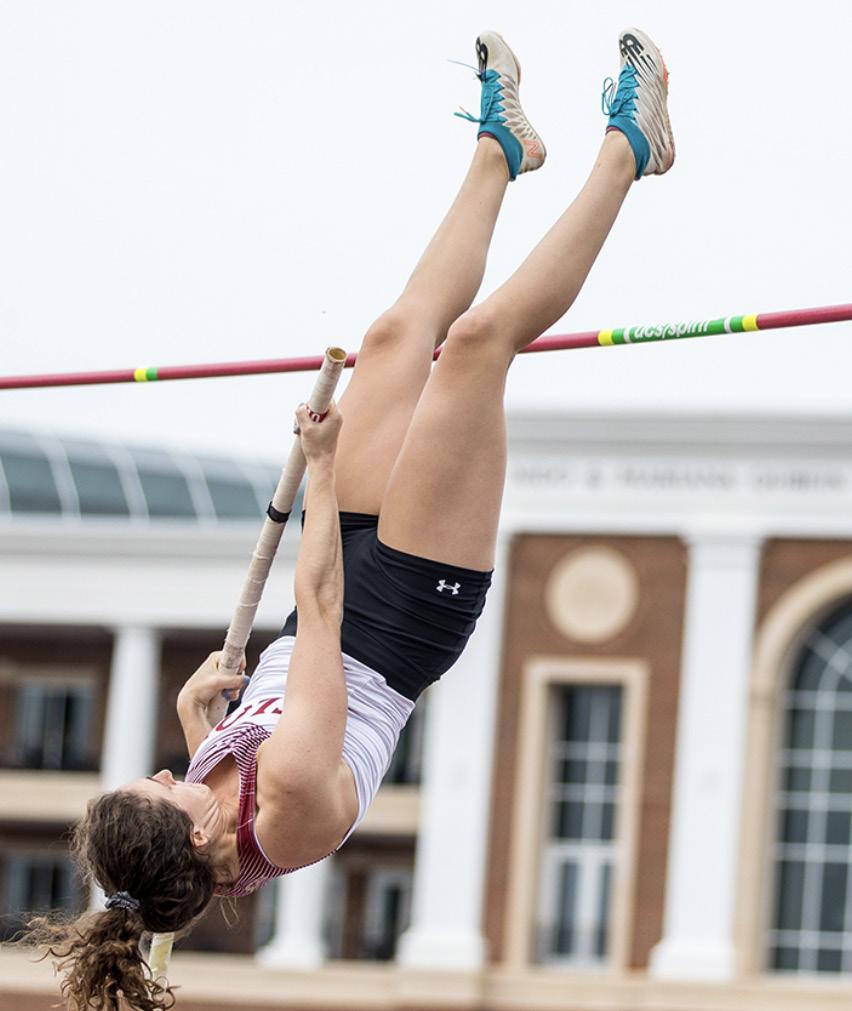
Never underestimate the power of a dream. Many of us want a lot of
things, but not all of us are willing to work for it, particularly when the risk is high. Obstacles have silver linings in that they build endurance.
You, like Jess, deserve MORE!
Dream big and work for it and it will become yours.
7 TAKEOFF MAGAZINE
Twin Valley Pole Vault
New Ulm, MN
Emily Pearson
Emily Pearson is a senior at New Ulm High School who appreciates that there are still so many things about the vault that she can improve upon under the coaching of Jon Hammerschmidt. Her personal best is 11’1”.

Emily just missed out on going to states last season, but she was named most valuable field event athlete. She has broken the school record twice.
Emily has been challenged by injury, specifically shin splints, achilles tendonitis, and a back affliction. These involve rest that she does not want to take. At times she compares herself to other vaulters, or worries about things she cannot control. While Emily has not overcome these struggles yet, she consistently finds ways to make them better.
Emily tends to be hard on herself and Hammerschmidt encourages her to find the positives in her practices.
“Emily was one of the main reasons TVPV even got started. If I didn’t see how eager she was to get better, I would have never been motivated to finally start living my dream of running a club.
Emily is the most persistent, resilient, and motivated person I have had the chance to meet. No matter the setback, she always gets up back on her feet and gets back to work. She has a bright
future ahead of her and I cannot wait to see what she accomplishes,” said Hammerschmidt.
Emily is currently working on accelerating her run, using her bottom arm, and leading with her chest.
Emily has received an academic award for the past three years for being in the top 15% in her class. After high school, she plans to pursue a degree in physical therapy.
Photo provided by Jon Hammerschmidt
CLUB
Head Coach: Jon Hammerschmidt
HUB
8 TAKEOFF MAGAZINE
Libby Lommel
Pole vault coaches matter and Libby Lommel is proof. After three years without technical training or access to poles shorter than 13’ at Saint Cloud Apollo High School, Libby’s father found Twin Valley Pole Vault Club online.
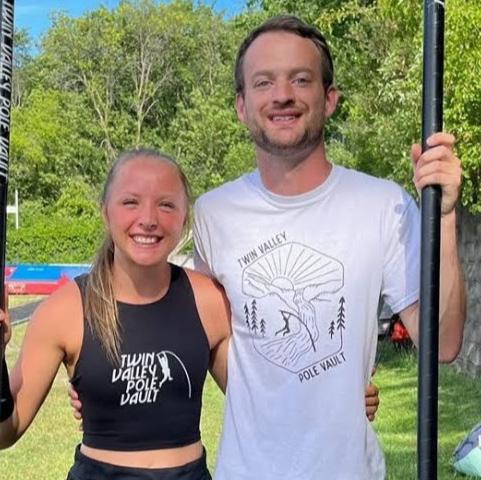
Having poles that were the correct size, and learning from a passionate coach was a difference maker. Libby loves the small improvements she has made along the way. She is currently working on maintaining a strong bottom arm during the plant, and an open chest during takeoff.
“Libby is the type of athlete that any coach would be happy to have the privilege to work with. Despite a busy schedule, she still makes the 4-hour round trip to practice, sleeps on the pit in order to get more practice in the next day, and finds ways to work on her skills at home. She has made so much progress in her 5 months at TVPV and deserves all of it. No matter what her future holds, I know she will do amazing things,” says Coach Hammerschmidt.
Coach Hammerschmidt has been the biggest influence on Libby’s vault career. He is fully committed to the sport and is always looking for better ways to coach. He takes the vault one step at a time while never letting anyone feel inferior. Before she found the club, Libby watched many Team Hoot pole vault videos.
At her home meet her senior year, Libby was the only vaulter competing. She cleared 8’ easily and progressed to 9’, then 9’4” a new personal best,. She continued on to clear 10’4”. Libby felt on top of the world with her 13” PR that day!
TAKEOFF MAGAZINE
Vault
Photo provided by Jon Hammerschmidt
9
Supplements: What You Need to Know
By Summer C. McNeill | Auburn University Dietic Intern
What are they?
According to the FDA, “Dietary supplements are intended to add to or supplement the diet and are different from conventional food.” Supplements can come in the form of powders, drinks, pills, liquids, food, gummies, or any other consumable. It is important to note that supplements should never be used as a replacement for real food, but simply as an addition to an already well-balanced diet. Some of the most popular supplements include multivitamins, protein powder, creatine, and energy drinks. Supplements can be taken for a variety of reasons depending on the needs of the individual.
Are they safe?
Supplements are not regulated by the FDA and can contain harmful or banned substances. Athletes should exercise extra caution when consuming supplements, as some substances can interfere with their eligibility to participate in their sport. Be sure to always follow usage guidelines, as overconsumption of supplements can lead to adverse health effects. To find supplements that are safe and approved for athletes, use the following resources:
nsfsport.com sport.wetestyoutrust.com
Who needs them?
Supplements should be used when all of the necessary nutrients cannot be consumed in the diet alone. The best way to know if you could benefit from adding a supplement into your routine is to meet with a doctor for a consultation or blood testing and/or speak to a dietitian about your lifestyle and goals.

When do I need them?
Supplements are meant to be supplemental. You should not rely on them to be your only source of a specific nutrient. Always aim to eat real food first and then use supplements to fill in the gaps. Eating a diverse and well-balanced diet can provide you with all of the necessary nutrients to meet your dietary requirements. If you decide to utilize supplements as a part of your routine be sure to follow the recommended guidelines outlined on each individual product.
Summary
Supplements can be a helpful addition to an already balanced diet. If you decide to add supplements into your routine, look for products that are third-party tested using the resources provided above. Lastly, be sure to always consult a health professional for health-related issues and major lifestyle changes.
NUTRITION
10 TAKEOFF MAGAZINE

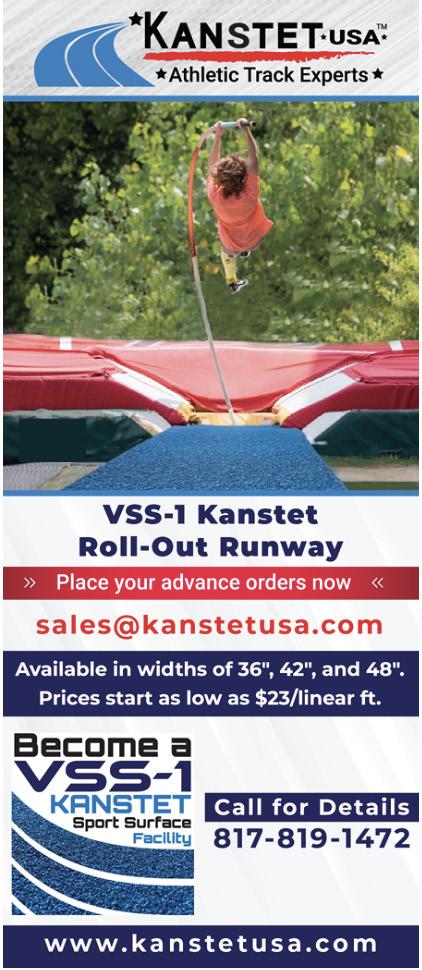
Maddie Davies Jon Horn Duke University
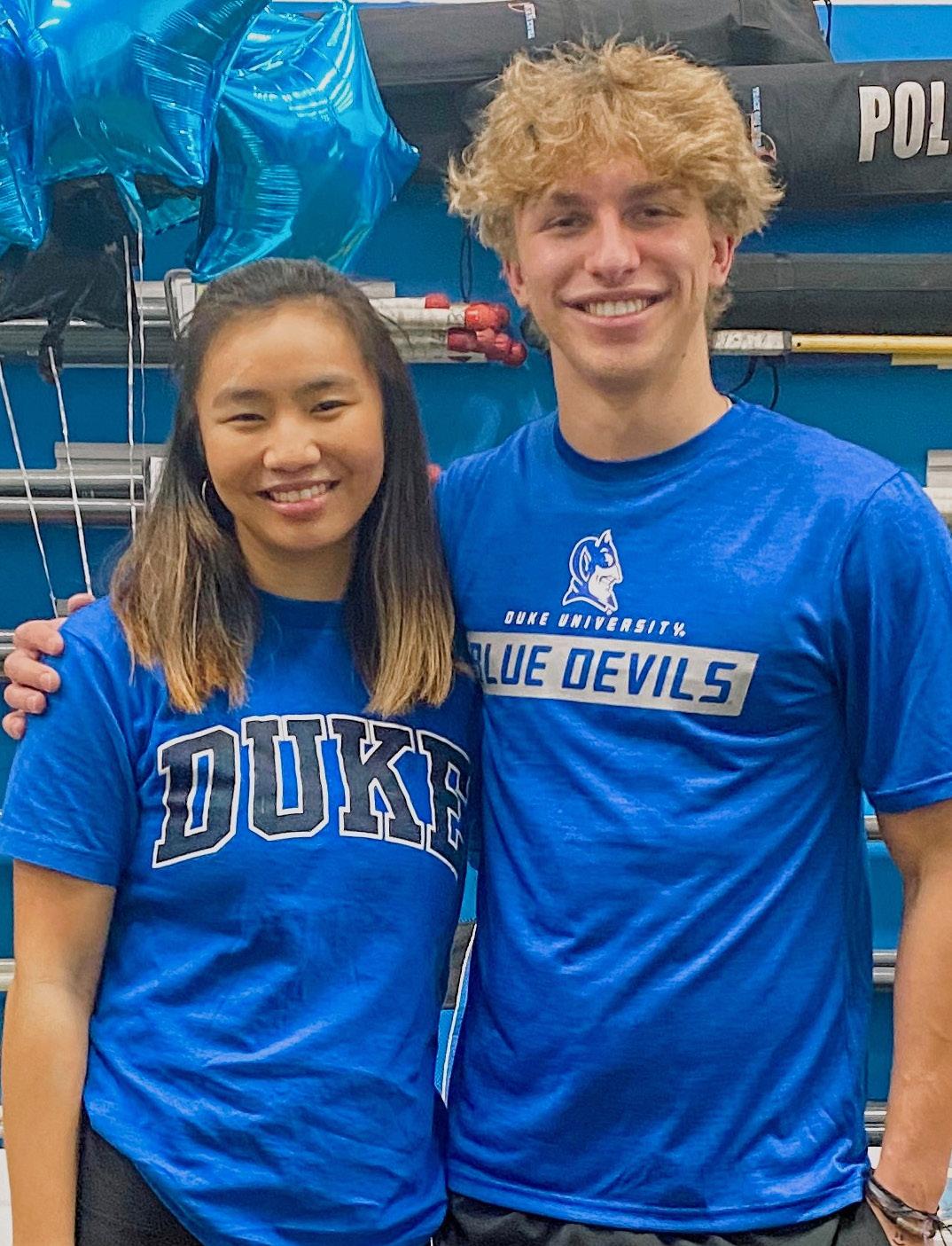
RECRUITED RECRUITED
12
Photo provided by Jon Horn
On a warm Sunday in October of 2021, Shawn Wilbourn, head track and field coach from Duke University attended a practice session at Pole Vault Carolina. Coach Wilborn was transparent in telling us he had completed his recruiting and was just visiting. In attendance that day were Maddie Davies and Jonathan Horn.
Jon’s athleticism immediately caught Coach Wilbourn’s attention. He took out his phone to video Jon’s jumps and they engaged in conversation early in the practice. Maddie’s practice was going well but she knew her goal of becoming a student athlete at Duke depended on what she did during the last 30 minutes of session. (She has been wearing Duke t-shirts and sweatshirts to the club for four years!) Maddie grabbed a larger pole, adjusted her run, moved her grip, and took a massive jump. She did it again and again. At the end of practice, Coach Wilbourn asked to speak with Jon and Maddie, recruiting them on the spot.
How did they accomplish this?
In the summer of 2020, in the middle of the Covid pandemic, Pole Vault Carolina offered a group of athletes the opportunity to train together 3 sessions per week, with the objective of achieving training consistency and elevating their performance. We believed the synergies created in the group would nurture an environment for state champions, national qualifiers, and collegiate athletes. Maddie and Jon were invited along with 10 others, and they accepted the challenge.
Training was hard. Uncertainty surrounded the limited competitions that were available for athletes to participate outside of the club. The goal was to be ready to perform at the highest possible level at the first competition. Not knowing what the future held, Maddie and Jon made every opportunity count.
Both athletes had started pole vaulting in middle school.
Maddie, a former gymnast, was immediately hooked with vaulting and set her goals on becoming a state champion and a collegiate athlete. She has the work ethic, the mental determination, the athleticism, the drive to succeed, and a supportive family to guide her through the process. She attended Athens Drive High School in Raleigh, NC with over 2,000 students, athletic facilities, a track and a pole vault pit, everything
you might expect from a 4A school. From her first day in high school, Maddie advocated for herself, and trained only at Pole Vault Carolina, as her school did not have a coach to support her in the event. Maddie was determined to become a student athlete at Duke.
Jon had ventured into multiple sports but sought a new option for competition. He liked pole vaulting but attended practices sporadically during his freshman and sophomore seasons. Jon had the athleticism but he did not commit to his potential until his junior year. Jon had the support of his family. He attended Burlington Christian Academy, one of the smallest high schools in North Carolina. The school does not have a track nor a training facility. His graduating class had 37 students. Jon drove 1.5 hours roundtrip to practice with the support of his father, the head coach at Burlington Christian. Jon did not know where he wanted to attend college.
Maddie and Jon were both excellent students with high ACT scores, and both were involved in school and community activities.
The rest of the season was not easy for either of them. They faced adversity, and worked through it. Maddie won the NCHSAA Indoor State Championship, before injuring her achilles heel and ending her high school career. Jon injured his knee which prevented him from running or jumping for 90 days. Jon went on to win the NCISAA State Championship in the pole vault and 110H. He also finished 4th at Adidas Nationals Championship division with a jump of 16’.
Two years after committing to jump together, Maddie was a 2-time 4A NCHSAA pole vault state champion, and a 6 -time national qualifier. Jon was a 3-time 1A NCISAA state champion in the pole vault and 1-time gold medalist in the 110H and long jump. As a junior he was a runner up in the 300H and 110H.
Maddie and Jon recently moved into Duke University as freshman student athletes. Although their stories are different, determination, dedication, and resilience played key roles in their path to Duke.
The true gift of coaching is not what the athlete achieves while training with you, it is what they do with what they learned to improve life in big and small ways. I cannot wait to see what Maddie and Jon accomplish not just as athletes, but what their overall contributions to our society will be. I am grateful to have been trusted with their development.
13 TAKEOFF MAGAZINE
Photo provided by Tim Reilly
Trick Your Mind Into Being a Better Vaulter
By Leah Deforest Granger
Our minds can deceive us. What if we use that to our advantage?
Each time we repeat the movement of vaulting, our muscle memory of the jump is strengthened. This is the reason that trying to vault on your bad side makes you feel silly and trying to change your step feels frustrating. In this article we will go over the basics of how the brain learns, how your brain has understood how to pole vault, and how you can use that to improve your performance.
There is still much to be discovered about how the brain learns and remembers. What we do know is that there are specific hubs for storing memories, namely the hippocampus and the cortex. We also know stored memoires are intricately connected to associated memories throughout the brain in what we call networks. The memory you have of putting on chalk at pole vault practice for the first time may be connected to the memory of your last bar routine from your gymnastics days. This ability that our brain has to associate memories helps us to trigger memories when we need them. Next time you have to memorize a list of words, try associating each word with a part of your vaultit will help! Each time an association is made, the connection in the brain is made stronger.
Since pole vaulting is such an un-
natural movement, the muscle memory network built has little overlap with other networks. Even pro vaulters cannot usually jump on their non-dominant side. It is not the lack of muscles but the lack of muscle memory that holds you back. The benefit of doing such a unique sport, is you are more coachable when you do not have prior incorrect practice. If you do not know how to do something, you do not know how to do it wrong. At every practice, you are connecting neurons to create a muscle memory network that is new and improving.
The downside of doing a niche sport, is that it is difficult to learn. When a network is not overlapped with many other networks, it cannot rely on past memories to know what to do. Even more importantly, once this network is strong, it is harder to change. For example: if you began jumping your sophomore year of high school with your final step a foot in, by the time you get to college a few years later, you have thousands of repetitions of this step in your muscle memory. Of course, it will be difficult to change.
If you are getting worried, I have good news for you. This is a situation most vaulters encounter, including Olympic Champion and recent World Champion Katie Nageotte!
Katie has been a commendable example of how after years of prac-
tice you can still have great success making changes to your vault. On March 5th, 2021, she posted on Instagram about the improvement she made to her takeoff position over the previous years. In the photo from six years before, her drive arm is bent and lower body is sucked under her. In the photo from three years before the post, her arm is significantly pressed out, though her hips and lower body continue to be further into the pit than she wanted. The most recent photo shows her takeoff at the time, a powerful position that sets her up for the swing that has been bringing her the gold. The way she did this was by changing her neuronal network, and you can do the same. The three steps are:
1) Stop practicing the old habit. This will stop the connections you do not want from strengthening, and without use they will weaken on their own.
2) Start the new habit. Each time you take off at your new step that is connecting the run and swing, you know well with the new step you’re learning.
3) Use visualization. Picturing your practice of breaking habits is way more important than it feels. Even thinking about what it feels like to take off at a new step is helping to build the new network connections.
MENTAL HEALTH
Photo provided by Barbara Hayward
14 TAKEOFF MAGAZINE
Drills are your best friend. They are a perfect example of something that is avoiding the bad habit, repeating the new habit, and can be visualized before a jump.

Once a new habit is solidified into the network of your jump, it can be triggered by even a one-word cue.
Let’s say you are practicing a new step on the slide box. Because of the way your brain works, you can associate this new step with the word banana. Each time you practice it, you picture a banana on the runway and that helps you keep the step out. Then when you go to the pit, you can just think of the word banana,
and you are more likely to succeed in getting the new step on.
Don’t do it until you get it right, do it until you can’t get it wrong. Your mind is powerful. Instead of letting it take over, find how you can master it.
15
Photo provided by Jonh Tan
Sydney Horn
Hana and Amanda Moll
Higher at High Point
:
A Tale of Two Sisters
By Adele San Miguel
Hana and Amanda Moll are enriching the world of pole vault and not because they are the current reigning World Athletics U20 champion (Hana) and U.S. National High School record holder (Amanda).
The twins from Olympia, Washington do not calculate heights cleared, records broken, or meets won. They value the experience of vaulting – they get to do this. When a meet does not go to plan, they do not suffer emotionally because their self-worth does not improve or diminish based on a height cleared. They simply love to fly and they work off each other’s success.
What is it like to coach the Moll twins?
Capital High School coach, Mike Strong, has coached them in plyometrics, speed, and strength since seventh grade. The athletes are now seniors.
“What I would say to this point is the character they have shown as young women will allow them to reach limits beyond the numbers. They love the pole vault, they love practice, they love learning, and they love each other and their family. Tim and I and those close to them are engines that spark their greatness. Amanda and Hana are har-
nessing the growing wind around them and that will keep them balanced.”
Their vault coach, Tim Reilly of Northwest Pole Vault says “It’s a joy and privilege, as you’d expect. Increasingly, it’s a thrilling challenge as a team member to actualize their potential while keeping them healthy and keeping it fun. Also, they are radiant young people whose love for each other is heart-melting. Getting to know and love each of them individually is a blessing and grace.
Hana and Amanda are just getting started. They will rewrite the junior and NCAA record books completely, which will impact vault development in the U.S. profoundly. Whether they eventually clear 5.15 or not, who they are and how they roll will be a story that enchants vault fans around the world.”
TAKEOFF Magazine enjoyed a delightful Zoom call with Hana and Amanda shortly after they returned from Cali, Colombia and the World Athletics U20 Championships.
TAKEOFF: Hello! Let’s start with the World Championships. Tell us about your experience.
Amanda: The travel was great. We didn’t have any problems with poles
making it. The first day was also great. We just had to clear 4.05m to make it through so it was pretty easy. I went from a six step and Hana went from a seven, but then Wednesday we were all warming up and it started pouring. We had to sit inside for a couple of hours to see if they could do it on the same day. It ended up being rescheduled to Thursday, and that impacted all of us because we didn’t have a lot of food with us, just snacks, and we weren’t prepared to be sitting. But I was still fine. Then Thursday came, it was great weather, and you know, I didn’t do my best, but I still felt good. I wasn’t like, oh, my gosh, this this totally impacted my whole performance.
Hana: I learned a lot from this competition. I mean, just how to handle all the pressure of going representing my country and going out of the country to compete. That’s a lot of experience that you just have to do to get, and I think that will be really valuable going forward, going to other big meets if we do.
Amanda: Yes, I think something I learned was that the pressure is different when you’re competing for your country because it’s a lot bigger than just your high school team or your club or yourself. It’s different to learn how to deal with that pres-
Photo credit: Pole Vault Carolina
16 TAKEOFF MAGAZINE

TAKEOFF MAGAZINE
Photo provided by Tim Reilly
sure. I think that’s my biggest takeaway.
TAKEOFF: At what height did the finals open with?
Hana: The meet opened at 3.95 meters. I came in at that height and Mandy passed to 4.05.
TAKEOFF: What poles did you use?
Hana: We’re both on Altius brand poles, the Adrenaline series. For this competition, I was on a relatively small pole for me, but I think I peaked early on for my pole movement. I was on a 14’6 170 holding like eight inches down.
Amanda: I ended up going to 175 minus, but on my last attempt, I ended up blowing through it so I needed a bigger pole.
Hana: We have two 175‘s with different flex numbers. Minus is the one with the softer flex number.
TAKEOFF: What was it like to get to meet young vaulters from other countries?
Hana: Everyone is super nice. I had a great time and I hope I see them again. It’s really fun.
Amanda: It was definitely easier to communicate with the athletes who spoke English, but everyone was super nice. And even if English wasn’t someone’s first language, I think most of the girls were able to speak it.
TAKEOFF: Hana, what emotions were running through you as they played the national anthem?
Hana: Oh, that’s a hard one. I say pride because I was trying not to cry when they were playing that song because I think the realness of what happened set in at that moment. I was like, this is actually happening?
I was pretty overwhelmed with emotion.
TAKEOFF: Amanda, when you broke the National High School record at the Texas Relays and that whole crowd stood up, and cheered, what was that feeling like for you?
Amanda: It was really exciting. I think that stadium is really special because the crowd is so close and I’m not used to that. At first, I didn’t register it because I was still in my vault and then I recognized all the noise and I was like, wow, that’s loud. It definitely filled me with energy.
TAKEOFF: Awesome! How did you get started in pole vault?
Hana: Well, we had a background in track previously. We started track on the side of gymnastics when we were nine years old. I’d been doing high jump. And then we started doing multi events and then I quit gymnastics. I was looking for a sport to focus on so my mom did some research and found pole vault. She asked us if we wanted to try it and signed us up for one of Tim’s camps. I was super excited because pole vault is very similar to all the sports I love, just getting in the air and stuff like that. I loved it from there on out, basically.
Amanda: Same story for me. I stopped gymnastics a year later. But the timing of when we both started was the same because we started right after I finished gymnastics. Hana was doing rock climbing and mountain biking. Pole vault was the sport where we dove in together.
TAKEOFF: What are some of the challenges you faced as you’ve come up through the sport, and what did you do to overcome them?
Amanda: For me, my first challenge was injuries. I had a back problem
and then I’ve had little problems along the way. I dealt with those by seeking out a physical therapist and a chiropractor. I like getting ahead of injury by doing core stability and stuff like that because you’re twisting a lot and if you don’t have a strong core, there’s a lot of problems that can happen and it also benefits you.
I think doing all the preventative stuff has really helped because now I don’t have many injuries. And I also think my coaches have gotten smarter with injuries. I think it’s definitely really beneficial to find some injury prevention exercises.
The other challenge I faced was mental blocks. This has happened twice. I actually had a mental block right before I left for Colombia. Basically, I think both happened when I slipped off the pole and then I couldn’t trust myself and my plant. The first time I actually went into a spiral. Like I was thinking about it and so I wouldn’t commit and then I would feel myself slipping again. I spiraled down. And then I figured out what I was doing. What helped me out of that was going back to the basics and then building up my confidence again.
Hana: I had a similar problem a little bit before her and what helped me was spending a lot of time with my mind and telling myself that it’s okay because I needed to build confidence in myself. I bubbled up those negative thoughts and acknowledged all those fears, and let it go, which helped.
TAKEOFF: Great. Do you keep training journals?
Amanda: We’ve used to. I have one in my backpack, but it’s never stuck. It’s not something I need to have, I think.
TAKEOFF MAGAZINE
18

TAKEOFF MAGAZINE
Photo provided by Tim Reilly
Hana: The only time I’ve really used it recently was after a bad practice. I had these key things that I wanted to hit in my vault. I wrote them down to use as motivation so I would go for it.
TAKEOFF: What other track events do you all participate in?
Hana: This past high school year, I participated in the 4 X 100m relay where I ran the anchor leg and then the 100 meter hurdles.
Amanda: I was a part of the 4 X 100m team also, and then I did the long jump. I also do hurdles, but I didn’t this year because it was hurting my body. I decided to stick with just the sprints and long jump.
TAKEOFF: You both are very calm when competing. How do you achieve that?
Amanda: I do some visualization beforehand, and I try to be as prepared as I can so I’m not like, oh my gosh if something goes wrong. I know some things can go wrong and I just let those happen. Not having high expectations also helps. So just going in expecting nothing and being prepared.
Hana: Same thing for me. I mean, personality wise, we don’t exert our emotions very much when we’re focused. I’m usually more withdrawn to myself when I’m competing because I’m focusing and I don’t really have room for nerves.
TAKEOFF: How do you get the best from yourselves while you support another?
Hana: I think it’s important to separate ourselves and our performances and just acknowledge that we’re two different people. Like, I shouldn’t be comparing myself to her. So, if she has a good day and I don’t, I can still be happy for her because she’s
not me, you know?
Amanda: I completely agree. We’re at a point where we’ve always done pretty much the same thing throughout our entire lives. We just know that we’re two different people with two different vaults and two different minds. While we do have the same genetics, different things can happen. I think we just acknowledge that part. If I see Hana doing well, I’m like, okay, she’s doing really well. And then I just come back to myself.
TAKEOFF: So, it’s really no different than being two different competitors.
Amanda: I do think it’s a little different because we can help each other emotionally. Like I can come to Hana and be like, hey, this is like what I’m struggling with, and she can help me.
Hana: I think it’s just that we don’t compete with each other in the household as much as people might think we do. I don’t see her as a competitor.
TAKEOFF: Great. Do you have any other siblings?
Hana: No, it’s just us.
TAKEOFF: What’s something people don’t know about you?
Hana: Most people don’t know that we used to race cross-country mountain biking in middle school.
Amanda: We still mountain bike, but not racing. In our off time, we like to mountain bike.
Hana: We say we rock climb. I think people know that. But we don’t talk about mountain biking as much just because it’s not as popular of a sport.
TAKEOFF: How did you get involved in cross-country mountain biking?
Hana: My dad’s a big mountain biker. I was at a point where I wasn’t doing gymnastics anymore so I was exploring my options for sports. I’ve always liked mountain biking, so we decided to train.
Amanda: I think when we were younger and we did gymnastics we were fortunate enough to be part of a club that wasn’t all consuming. We had time to do other things. Our dad would sometimes take us mountain biking. And one of our family friends started a mountain biking club around the time we were exploring sports and their daughter is one of our friends. We just started doing that together and then we decided to race and train for it.
TAKEOFF: How do you train for that?
Hana: Well, we’re fortunate enough to live half an hour away from a forest with miles and miles of trails, good ones, too. So, we just go out for a ride.
Amanda: I would compare it to running, you know, like you can go outside and run, but you can also go on the treadmill. For biking, you could do the elliptical, but you can also go out on the trails. I prefer going out on the trails.
TAKEOFF: What does a typical pole vault training week look like for you?
Hana: Typically, no matter the season, we vault two days a week and then usually sprint a couple of times a week and then we’re off one or two days , I’d say.
Amanda: I always have one day of rest and we do stuff on the side of sprinting, like plyometrics or lifting. But usually, it’s a rest day or two and then training and then two days of pole vaulting.
TAKEOFF: And do you sprint with
TAKEOFF MAGAZINE
20
Amanda: Yes. Pole vault is an hour to an hour and a half away depending on traffic. We do everything else here in Olympia, and Coach Strong’s an amazing coach.

TAKEOFF: What is amazing about him?
Hana: He knows so much about track. He’s been involved with it for a long time.
Amanda: If you talk to him, you can tell he knows his stuff and he’s just a great person.
Hana: He’s super invested in what he does. He’s always looking for new training and for what might benefit us. That combination of wanting to learn and already know-ing a lot is what makes him really great. And he’s a good person too.
TAKEOFF: What’s it like to train with Coach Tim?
Amanda: I think he’s so great be
cause he allows you space to learnwhen you jump. He will ask what do you think you did? And what do you want to work on? And then he gives his advice.
Hana: He guides you, but he never pushes you. He gives you a small bit of advice, and doesn’t overwhelm you with advice, which I also think is very important because coaches could easily give you three things you need to work on. But he focuses on one thing at a time. And I think that’s really important for understanding your goal and improving and keeping that improvement.
Amanda: He’s very emotionally aware and he’s a very good teacher.
TAKEOFF: What is next for you? Is your season over?
Both: Yep. Yep, we’re done.
Amanda: We usually have a month and a half or two months off. We had a longer season, so we might have a
little less time. But now, we’re just going to actively rest. We’re going to do our fun activities like rock climbing, mountain biking, and then family and friends and get ready for school, too.
TAKEOFF: Are you looking forward to your senior years?
Amanda: I think so. Looking forward to taking classes I like more than last year.
TAKEOFF: Junior year can be tough. What are you thinking about beyond senior year?
Hana: Definitely vaulting at a fouryear college. We’re planning on going to a four-year college together and then, I don’t know, after that maybe we’ll go pro. We’ll see. Right now we’re planning to go to college and then we’ll figure the rest out.
EDITOR’S NOTE: Hana and Amanda recently committed to the University of Washington. We wish them every succes!
21
Photo provided by Tim Reilly
COACH’S CRITIQUE
Vault Carolina athlete Mason Coon

I really love how Mason pushes aggressively out of the back of his run and appears to create some power and momentum during the first two thirds of his run. He is bringing a lot of energy. He is running with a good natural rhythm and tempo.
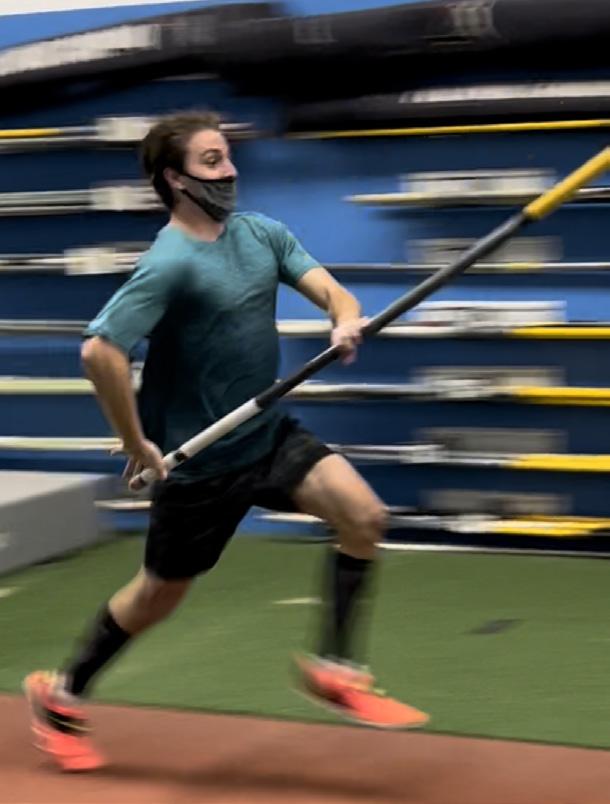

I would love to see less forward and backward pumping of his hands and more support underneath the pole with hands and elbow. He appears to also be sinking in his hips and over-striding a little bit during his last three lefts. If he can work on staying taller and getting his feet down quicker while punching his hands up, I believe he will go even higher!

TAKEOFF MAGAZINE 22 TAKEOFF MAGAZINE
Russ Johnson breaks down technique in this analysis of a vault by Pole
RUN
1
1 2 3
Run Run
TAKEOFF TAKEOFF TAKEOFF
I love how committed and aggressive Mason is when hitting his takeoff. He transfers a lot of energy into the pole and really follows through his takeoff leg. He is also really solid with his arms and core.
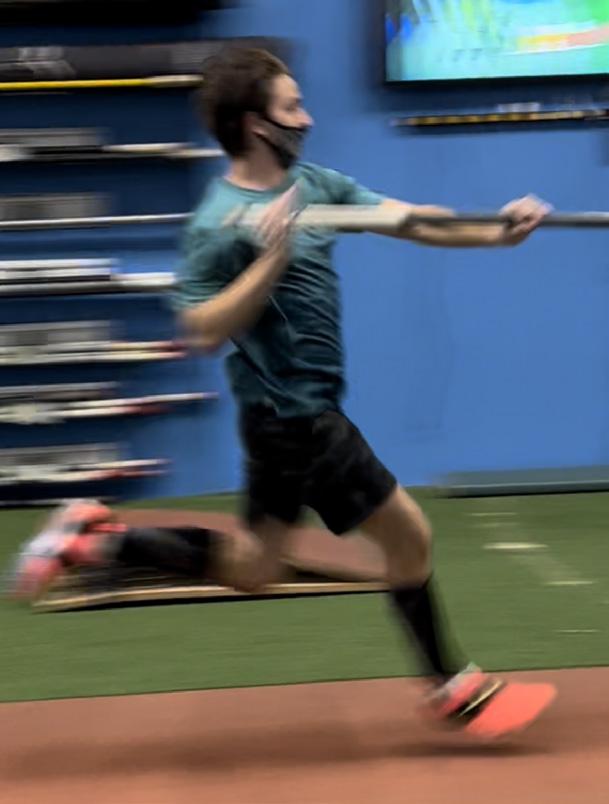
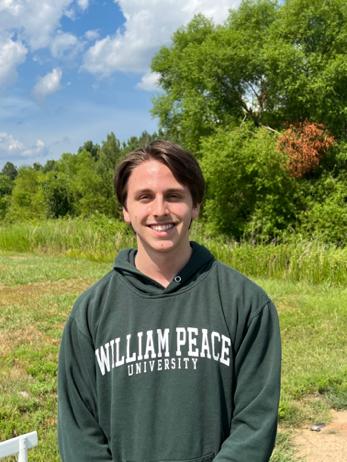

If he can stay tall, get his feet underneath him and jump up a bit more before the initial pole impact, I believe he will really improve his pole speed and technique on the pole. Improving his last 3 lefts and getting his step a little farther out will help give him some freedom to complete the transfer off the ground and remain elastic while pushing the pole.
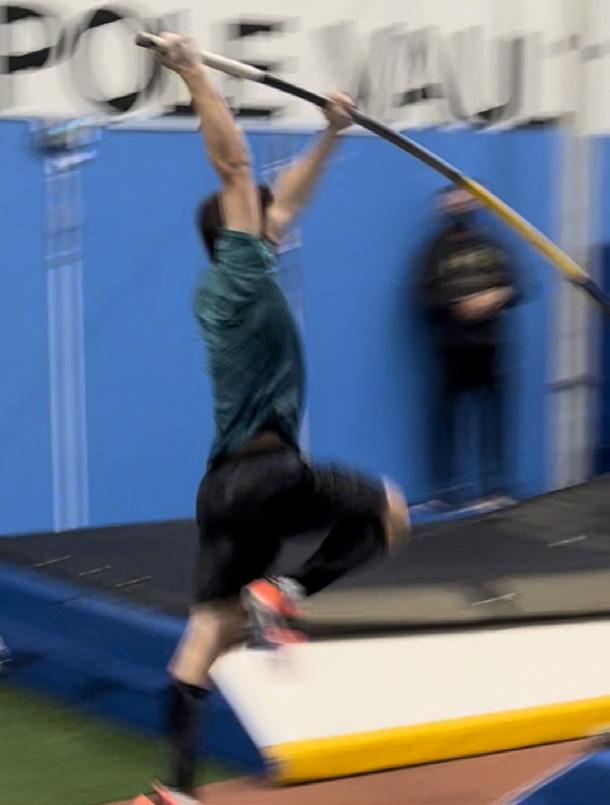
TAKEOFF MAGAZINE
23
COACH’S CRITIQUE

SWING SWING
SWING

Mason is working really hard to get upside down and get off the pole. His swing is hampered a bit by his final few strides and his takeoff angle and step. As he improves his running mechanics, posture, carry, and takeoff angle, I believe he will be in a more advantageous position to swing fast and stay behind the pole. Having more freedom to swing dynamically behind the pole and re-align with good top hand pressure should allow him to really elevate his hips and turn into his top hand earlier.

9 7
TAKEOFF MAGAZINE 24
8
Commentary
Mason is looking great! I love how aggressive he is on the runway and how solid he hits his plant. He shows a lot of commitment in his jump and is really close to making some big improvements. I believe he can really benefit from some small tweaks to his approach run in terms of pole carry and running mechanics, which will help set up a more efficient takeoff. I would really look at his runway numbers to make sure his mid-mark matches up to his speed and grip. In combination with getting his mid-mark where it needs to be, I believe he could focus on pole carrying drills to get the left hand, wrist, and elbow supporting the pole drop from underneath and try to tone down the forward and backward pumping. Study Sergey Bubka’s pole carry and his shoulder movements.
Mason is bringing a lot of aggressiveness and strength into his takeoff! This is always hard to teach. If he can learn to run taller and maintain proper sprinting technique (avoid overreaching or squatting) during the final strides, I believe he can really carry all that aggressiveness into the takeoff. Keep in mind that pole carry, drop, and posture greatly affect running mechanics. The swing and turn will continue to get easier for him as he improves his run and plant. Don’t get bogged down on the stuff in the air yet. Changes in the pole vault take time, patience, and determination. If Mason keeps working on these pieces, I think that all the dominoes will start to fall into line for him.
Some good activities to perform in additional to vaulting would be:
• Measured pole runs (check mark, mid mark, takeoff mark) with a towel or slide box
• Sand pit takeoffs for posture, angle, and rhythm

• Hurdling and hurdle drills to work on tall hips, foot placement, and rhythm
• Stiff pole vaulting to work on connecting the takeoff, swing, and turn
• Lots of pole carry drills and rhythm runs with a heavy pole
• Inversion/swing-up drills on the rope and high bar
25 TAKEOFF MAGAZINE
Russ Johnson
Philippe D’Encausse
IF I KNEW THEN WHAT
Philippe D’Encausse grew up around pole vault, surrounded by some of the best vaulters in the world. His father competed at the 1968 Olympics and Philippe represented France at the 1988 Seoul Olympics and the 1992 Barcelona Olympics.
Philippe’s knowledge and experience continue impacting the pole vault world as he is also an Olympic coach and a coach for the French National Team.
Philippe coached Renaud Lavillenie at the 2012 London Olympics, 2016 Rio Olympics, and 2021 Tokyo Olympics. Renaud won the gold medal in 2012 and the silver medal in 2016. Philippe also coached Renaud to a world record performance in 2014.
Philippe believes that the most important thing is two things:
You have to love the sport and you have to challenge yourself.
“As an athlete, I was not the best in my city at the age of 18. There were many vaulters who were better than me but I was motivated to improve because I loved the sport.
At age 20 I jumped 5.40m, which is not the best result internationally, but I thought that if I continued working hard, I could improve. At age 21 I competed in the Olympic Games.
I was still not the best athlete, but no one loved pole vault more than me.
If you look at Mondo Duplantis, Sam Kendricks, and Renaud Lavillenie, they all jump over 6 m. At the age of 18, Mondo jumped 6.05, but Renaud and Sam were jumping 5 m at 20 years old. Sam and Renaud were approximately the same kind of athletes. They were motivated and always thought it was possible to jump higher. They love the sport and they set higher goals.
As a coach, I challenge my athletes all the time. It is good for every athlete. When you train alone, you can work on some things, but the most important thing is the competition. At practice we will work on the parts of the vault, and many times we finish practice with intergroup competition. Everyone uses the same pole and the first to jump 5 meters wins. If you are in competition all the time, you will be ready for the big competitions that count.
If you love your sport, you have a chance to be good at it. As you go higher, there will be people to help you. Your work is to make every day a successful one.
In addition to his love of pole vaulting, Philippe is a motorsports enthusiast.
I KNOW NOW...
Your work is to make every day a successful one.
26 TAKEOFF MAGAZINE
Phillipe D’Encausse is a 1988 and 1992 Olympian. In addition he coached at the 2012 , 2016, and 2021 Olympic Games.

27 TAKEOFF MAGAZINE
George Vincent Correale

1969-2022
Beloved brother, cherished uncle, adoring son. We will remember the laughter.
Photo credit: Tammy McKinnon




































